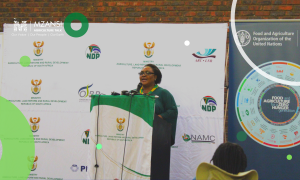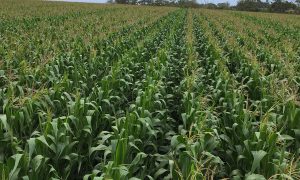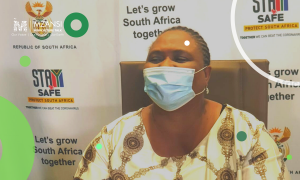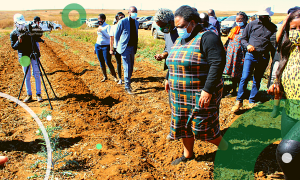The implementation of the Agriculture and Agro-processing Master Plan is like cooking a cuisine that needs low heat over a prolonged period of time – Umngqusho like as high heat messes the dish.
The Minister of Agriculture, Land Reform and Rural Development (DALRRD), Honourable Ms Thoko Didiza, with social partners in the agricultural sector launched the Agriculture and Agro-processing Master Plan (AAMP) in May 2022, as the industry’s social compact.
In short, this means agriculture as a sector has its own social compact. The targets of the AAMP were classified under different pillars as identified in the social compact. During the launch, the Minister indicated that the targets that were agreed the best possible under the circumstances.
It is important to note that despite the compromises that were made, labour did not sign, and were present at the launch and offered to support the process that will finalise the matters they raised. At the launch, there were many speakers offering messages of support and what best represented the proceedings was what said by the President of AFASA (Mr AJ Mthembu).
The President of AFASA in delivering his message of support, likened the launch room with the maternity ward where midwives are busy assisting in the delivery of a newborn. The basis of his argument was that beyond the process of giving birth, much more work will then have to be done to raise the child into being a reasonable human being. This piece provides a summary update of what has happened at the blended finance front which falls under pillar 3 of the AAMP.
Social compacting principle
The AAMP took a long time to be developed, negotiated, agreed upon and ultimately signed. This was because the interests of all the partners needed to be safeguarded and surely not in their initial states. The process of negotiations by its very nature involves the concept of “give and take” where compromises are/were made. The endgame was clear that we need a “competitive agricultural sector that is inclusive”. The delivery models were agreed as value chain round tables (VCRTs) and production or transformation schemes. There was an undertaking that the composition of these two delivery models will embed the public private partnership principle. It must be noted that the AAMP achievement is a responsibility of all social partners and in this aspect the blended finance initiative by the DALRRD and Land Bank is being implemented.
Update on the blended finance
Pillar 3 captures the target on blended finance to mean: Implement the Blended Instrument by upscaling the existing initiative by BASA and DALRRS on the blended finance model. Link commodity organisations for technical support to farmers applying for funding. Focus on value chain/contract/crop financing (including financing operations on leased land). In line with this pillar – there’s been remarkable strides, and there’s an expectation for more achievements. The implementations of the AAMP in respect of blended finance is in progress.
To substantiate that, let’s use the Land Bank update on their portfolio. If we were to use the language used by the Honourable President Cyril Ramaphosa in his last State of the Nation’s Adress (SONA), we would argue that the blended finance administered by the Land Bank has 123 Tintwalo’s but let me use the language of the Bank that 123 client’s applications have been approved. Noteworthy, the distributions covered all the provinces.
In monetary terms, the total value of the 123 applications stands at R953 million. Understanding that approval does not equate to money transferred already, it is important to outline that R550 million has been disbursed. Since this is a blend, it is equally important to outline that the loan component of the disbursed amount stands at R269 million while the grant component is R280 million. The share of the blend is clear that the grant component is slightly bigger than the loan component.
Concluding remarks
Government in South Africa is argued to always fall short of communicating its achievements. Could it be on the notion that blowing your own trumpet is not always encouraged?
The fact that not much has been communicated must not be equated to no work happening or done. This piece provides information that indicates that the AAMP is being implemented in so far as the blended finance administered by the Land Bank. In economics there is a concept called momentary supply which argue that the supply of a given product can be perfectly inelastic/elastic to price changes. In Nguni languages there is an idiom that goes as follows “iqunube alivuthwa ngokwe minqweno yemfene”.
Newton’s 3rd Law of Motion argues that for every action there is an equal and opposite reaction. The AAMP is being implemented – all be it at a slow pace.
Article by: B Nyhodo, BM Mpyana, N Gwamanda and K Mosoma
Disclaimer: The views and opinions expressed in this article are those of the author and do not necessarily reflect the official policy or position of Mzansi Agriculture Talk.




















